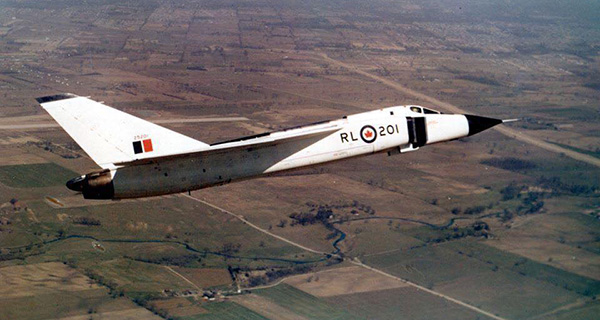 On Feb. 20, 1959, the Canadian government cancelled the Avro Arrow. Some people still refer to the day as Black Friday.
On Feb. 20, 1959, the Canadian government cancelled the Avro Arrow. Some people still refer to the day as Black Friday.
Growing up in Ireland, my teenage awareness of Canada was limited. Other than occasional news snippets in my father’s weekly edition of Time magazine, Canada meant snow, the RCMP, Paul Anka and Yvon Durelle, the latter having recently battled Archie Moore for the light-heavyweight boxing championship of the world. So the cancellation of the jet program had no emotional resonance for me.
But the Arrow’s demise was a big deal for many Canadians. And 60 years later, it retains the capacity to stir passions.
The Arrow was a military plane, a supersonic interceptor jet designed and built by A.V. Roe Canada Ltd. (Avro) to specifications laid out by the Royal Canadian Air Force. Intended to counter the threat of Soviet bombers attacking via the Canadian Arctic, it was touted as superior to any competing aircraft. It would fly higher, faster and in all kinds of weather.
From the program’s launch in 1953, it took just four years to create the first production version, which was unveiled in October 1957. The maiden flight came less than six months later, on March 25, 1958. By the time the federal government cancelled the program the following year, five more had been built and 31 others were in the pipeline.
So why did Prime Minister John Diefenbaker cancel the Arrow?
Money was certainly a reason. The Arrow was an expensive proposition, one that would suck up a large chunk of the budget dollars allocated to military spending.
Jim Floyd, Avro’s engineering vice-president, believed that Diefenbaker and his advisers were naïve in this regard. Rather than understanding that high-technology investments invariably run over initial estimates, they saw the Arrow’s rising costs and concluded that it was out of control.
There was also the absence of foreign sales, which would’ve helped defray those costs. Acknowledging this failure, Floyd contended that Canada tried to sell it too early in the development cycle. “You never sell an aircraft to a foreign government before you’ve developed it yourself,” he said.
Still, seeing where those sales might have come from is a challenge. Very few countries would have been in the market for a plane like that. And those that might be interested would likely have wanted to build it themselves.
The Americans, for instance, wouldn’t have outsourced the provision of such a plane. Pride, national security considerations and the lobbying/voting power of their own aerospace industry would’ve precluded it.
Indeed, the American desire to protect their industry is sometimes advanced as a critical reason for the Arrow’s demise. A popular theory has it that a deal was struck: Canada would cancel the Arrow in return for American concessions under the Defence Production Sharing Agreement.
The waters were also muddied by the psychological impact of the 1957 Soviet launch of the first satellite, Sputnik 1, and the space race. Suddenly, there was much talk that manned interceptor aircraft were yesterday’s news. Future threats would come courtesy of intercontinental ballistic missiles, against which interceptors offered no protection.
Alluding to the Arrow, Diefenbaker put it this way: “There is no purpose in manufacturing horse collars when horses no longer exist.”
Although the prospect of cancellation was widely discussed in the media, the execution – when it came – was brutal. In Floyd’s telling, the news was on the radio before he heard of it.
Immediately, some 14,000 Avro employees lost their jobs and another 10,000 or so soon followed in supporting industries. Avro itself closed its doors in 1962.
Many of the laid-off engineers went to the U.S., some to work on the space program. Floyd, English by birth and upbringing, took employment as a consultant on the development of the Anglo-French Concorde.
By government decree, the six Arrows were soon cut apart and sold for scrap. Similarly, the blueprints, designs and other assorted production paraphernalia were destroyed.
The general consensus of historians seems to be that Diefenbaker’s decision to cancel the Arrow was justified. However, the manner in which it was done and the subsequent disposition of the remains is another matter. In effect, its technical data was erased.
Desmond Morton’s 1988 formulation pulled no punches: “It was an act of extraordinary vandalism and vengefulness and no one has formally taken responsibility for it.”
Troy Media columnist Pat Murphy casts a history buff’s eye at the goings-on in our world. Never cynical – well, perhaps just a little bit.
The views, opinions and positions expressed by columnists and contributors are the author’s alone. They do not inherently or expressly reflect the views, opinions and/or positions of our publication.

